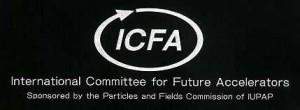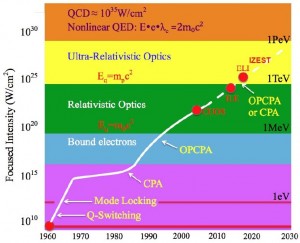The International Committee on Future Accelerators (ICFA) sponsors a seminar on “Future Perspectives in High Energy Physics” every three years. This year’s four-day international exchange of information, held at CERN from 3 to 6 October, concentrated on plans for future facilities in the field of particle physics. In addition, the seminar reviewed the new results from the LHC and other current facilities. The meeting also served as a starting point for the update of the European Strategy for Particle Physics, which has recently gotten under way and is scheduled to be completed in early 2013.
ICFA was created in 1976 by the International Union of Pure and Applied Physics to facilitate international collaboration in the construction and use of accelerators for high-energy physics. Its purposes, as stated in 1985, are as follows:
- To promote international collaboration in all phases of the construction and exploitation of very high-energy accelerators.
- To organise regularly world-inclusive meetings for the exchange of information on future plans for regional facilities and for the formulation of advice on joint studies and uses.
- To organise workshops for the study of problems related to super high-energy accelerator complexes and their international exploitation and to foster research and development of necessary technology.

Hitoshi Murayama of IPMU, Japan and UC Berkeley, US, gave a colourful talk on future opportunities in the field
ICFA has played a central role in bringing together scientists in our field to exchange ideas, communicate plans and work together toward future facilities in the field. In particular, ICFA has served as the scientific oversight organisation for the ILC, including making the crucial technology decision to base the design on superconducting radiofrequency technology.
Hitoshi Murayama set the stage for the consideration of new facilities for particle physics by showing the multitude of theoretical possibilities (view also the video). The ICFA seminar itself covered the broad range of possible future facilities from energy frontier accelerators, like the ILC, CLIC or a muon collider, to high-intensity machines like a high-intensity proton source such as Fermilab’s Project X and future neutrino facilities.
Steinar Stapnes, CERN, made the presentation on the ILC and CLIC programmes directed towards a future linear collider (view video). He summarised the status and plans for the ILC and for CLIC, stating that the “CLIC technologies are moving from feasibility studies towards implementation studies and optimisations in the next phase” and that there is “increased focus on energy flexibility and staged implementation, as well as systems testing.”
Finally, the most forward-looking talk given at the ICFA seminar was by Toshiki Tajima, who reviewed the advanced and future projections for laser technology, and the potential for future laser plasma accelerators (view video).
The range of opportunities in the coming years for large new facilities for particle physics bodes very well for the future of the field. Clearly, we will not get everything we desire, certainly in the short term. But I am confident and the ICFA seminar illustrated that we know ways to move forward and make steady progress in developing exciting new facilities for particle physics, and well far into the future.




Recent Comments